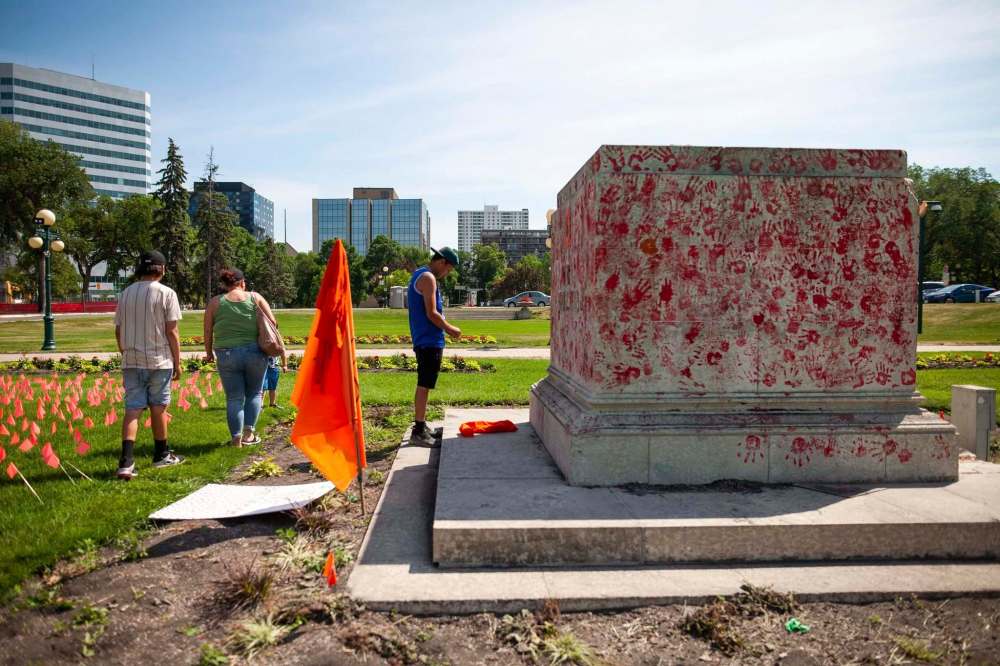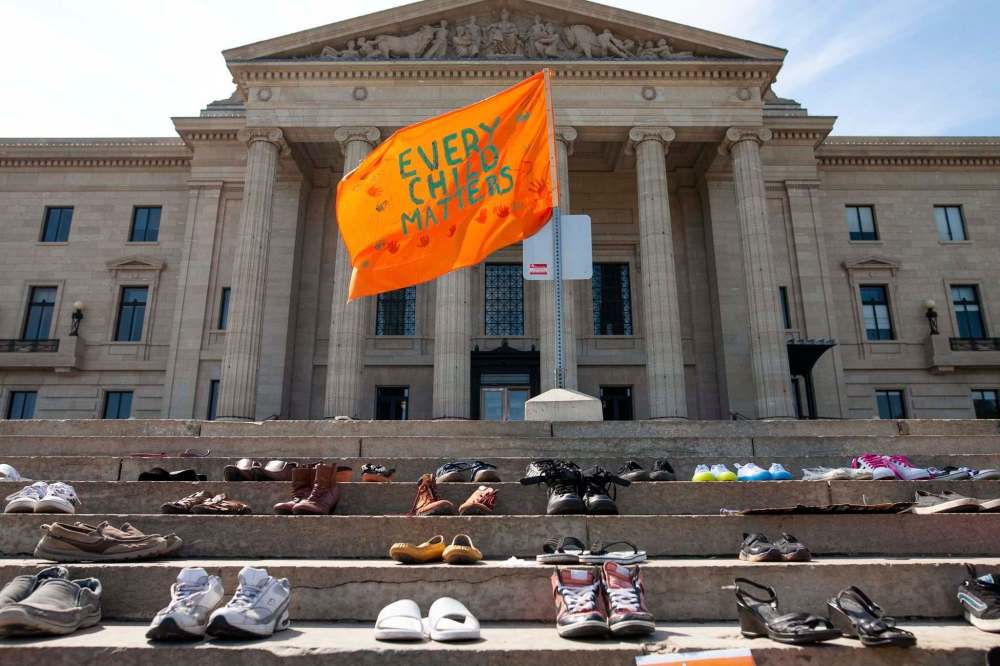Toppling statues misdirects powerful message: leaders
Advertisement
Read this article for free:
or
Already have an account? Log in here »
To continue reading, please subscribe:
Monthly Digital Subscription
$0 for the first 4 weeks*
- Enjoy unlimited reading on winnipegfreepress.com
- Read the E-Edition, our digital replica newspaper
- Access News Break, our award-winning app
- Play interactive puzzles
*No charge for 4 weeks then price increases to the regular rate of $19.00 plus GST every four weeks. Offer available to new and qualified returning subscribers only. Cancel any time.
Monthly Digital Subscription
$4.75/week*
- Enjoy unlimited reading on winnipegfreepress.com
- Read the E-Edition, our digital replica newspaper
- Access News Break, our award-winning app
- Play interactive puzzles
*Billed as $19 plus GST every four weeks. Cancel any time.
To continue reading, please subscribe:
Add Free Press access to your Brandon Sun subscription for only an additional
$1 for the first 4 weeks*
*Your next subscription payment will increase by $1.00 and you will be charged $16.99 plus GST for four weeks. After four weeks, your payment will increase to $23.99 plus GST every four weeks.
Read unlimited articles for free today:
or
Already have an account? Log in here »
Hey there, time traveller!
This article was published 03/07/2021 (1618 days ago), so information in it may no longer be current.
The anger that drove two queen statues to the ground at the Manitoba legislature is understandable but misdirected, two local Indigenous leaders say.
The Queen Victoria statue and a smaller statue of Queen Elizabeth were pulled down by protesters on July 1 at the end of a walk to remember Indigenous children who died at residential schools.
Both statues had been removed from the legislative grounds by Saturday morning.

“You can appreciate and understand the different emotions that our people are feeling now, because of the discoveries of those small children,” Treaty One Nation spokesman and Long Plain First Nation Chief Dennis Meeches said Saturday.
After marches on July 1 to honour the children found buried in unmarked graves at multiple former residential schools sites, some people broke off from the march, looped ropes over the statues and pulled them down. The Queen Victoria statue was covered in handprints in red paint, and its head was thrown into the Assiniboine River.
“My personal opinion is that there’s a better way to channel that and to work toward the message of the knowledge keepers — and that is to repatriate our identity, our traditions, our customs, our heritage,” he said.
But Meeches noted treaties were signed during Queen Victoria’s reign — treaties not upheld by Canada. Residential schools also began under her rule, so he understand why people would target her likenesses.
The provincial government will have to think long and hard about whether it wants to put the statues back up, said Meeches. It would be a risky move for a provincial government already feeling the scorn of Indigenous people, he said.
“It is a symbol of oppression, not only here in this country, but all over the globe,” said Meeches.
He said the province should instead “move forward in partnership” with Indigenous people. One important aspect of that would be reclaiming the Indigenous names of places around Manitoba and creating centres to educate people about Indigenous history and, in turn, the true history of Canada, he said.
Manitoba Metis Federation president David Chartrand said Saturday he was “very empowered and impressed” watching thousands of people, Indigenous and non-Indigenous, taking to the city’s streets, emblazoned in orange shirts.
But the destruction of the statues undercut what was being done, he said.
“It was such a powerful message that was going across the country and the world,” Chartrand said, adding that pulling down the bronze statues opened the door to people to denounce them as vandals.
“They may have gotten 90 seconds of joy when blood was flowing with adrenalin, and then to go around and steal that from the children, it just upsets me,” he said.

Chartrand said the energy is misdirected.
He said he believes the policies of Queen Victoria tempered a more aggressive Prime Minister John A. MacDonald, who would’ve “got his army and marched right through our territory” had Victoria not advocated treaties.
“I hope they put the statues back up,” said Chartrand, adding he’d like to see a statue of Chief Peguis added to the grounds of the legislative building one day. For now, Indigenous people should continue to push forward at the negotiation table, he said.
Despite Canada’s failure to uphold its bargains in the past, “nobody can ever do to us now what they did to us then,” Chartrand said. “Never. We’re too smart. We’re too educated. We’re too strong.”
At the steps of the legislature, past the limestone block that once held the bronze Victoria on her throne, at the foot of the steps lined with empty children’s shoes, Kara Wolfe snapped photos on her phone.
Wolfe struggled with mixed feelings, she said. She didn’t want people vandalizing a city she loves, she said. But as an Objiwe woman, she said, “I’m glad she’s down. I hope they don’t put another one up.”
cody.sellar@freepress.mb.ca




